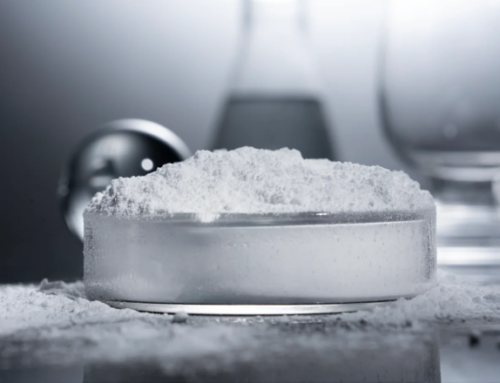Catalyst in the chemical reaction caused by the role of catalysis, solid catalyst in the industry is also known as the catalyst, can change the reactant chemical reaction rate (can both improve and reduce) without changing the chemical balance, and its own quality and chemical properties have not changed before and after the chemical reaction, catalyst in the modern chemical industry occupies an extremely important position, for example, The production of synthetic ammonia uses iron catalyst, the production of sulfuric acid uses vanadium catalyst, the polymerization of ethylene and the production of butadiene rubber and other three major synthetic materials, all use different catalysts.

Characteristic of catalysts
There are four basic characteristics of catalytic reactions that can be derived by definition and are important for understanding the function of catalysts.
- A catalyst can only accelerate a reaction that is thermodynamically possible. When it is required to develop a new catalyst for chemical reaction, thermodynamic analysis of the reaction should be carried out first to see whether it is a thermodynamically feasible reaction.
- The catalyst can only accelerate the reaction towards equilibrium, can not change the equilibrium position of the reaction (equilibrium constant);
- The catalyst is selective to the reaction, when the reaction may have more than one different direction, the catalyst only accelerates one of them, promoting the reaction rate and selectivity are unified;
- The life of the catalyst, the catalyst can change the chemical reaction rate, its own does not enter the reaction, in an ideal situation the catalyst is not changed by the reaction. However, in the actual reaction process, the catalyst is subjected to heat and chemical action for a long time, and some unpredictable physicochemical changes will occur.
Main classification of catalysts
There are many kinds of catalysts, which can be divided into liquid catalyst and solid catalyst according to the state. According to the phase of the reaction system, it can be divided into homogeneous catalyst and heterogeneous catalyst. The homogeneous catalyst includes acid, base, soluble transition metal compound and peroxide catalyst. Heterogeneous catalysts include solid acid catalyst, organic base catalyst, metal catalyst, metal oxide catalyst, complex catalyst, rare earth catalyst, molecular sieve catalyst, biocatalyst, nano-catalyst, etc. According to the reaction type, it can be divided into polymerization, condensation, esterification, acetal, hydrogenation, dehydrogenation, oxidation, reduction, alkylation, isomerization and other catalysts. According to the action size, it can be divided into main catalyst and co-catalyst.
1.Homogeneous catalysis
The catalyst and the reactant are in the same phase, and there is no phase boundary and the reaction is called homogeneous catalysis. The catalyst that can play a homogeneous catalysis is a homogeneous catalyst, and the homogeneous catalyst includes liquid acid, base catalyst, solid acid and basic catalyst, soluble transition metal compounds (salts and complexes), etc. Homogeneous catalysts act independently of molecules or ions, with homogeneous active centers, and have high activity and selectivity.

2.Heterogeneous catalysis
Heterogeneous catalysts, also known as heterogeneous catalysts, are used in reactions of different phases, that is, in different states from the reactants they catalyze.

Such as: In the production of margarine, unsaturated vegetable oil and hydrogen gas can be converted into saturated fat by solid nickel (catalyst), which is a heterogeneous catalyst that catalyzes both liquid (vegetable oil) and gaseous (hydrogen) reactants. A simple heterogeneous catalytic reaction contains the reactants (or zh-ch: substrate; zh-tw: substrate) adsorbed on the surface of the catalyst, the bond in the reactant is broken and leads to the generation of new bonds, but because the bond between the product and the catalyst is not strong, so that the product is removed from the reaction site and other processes, now known many catalyst surface adsorption, reaction of different structures.
3. Biocatalysis
Enzymes are biocatalysts, which are organic matter with catalytic ability produced by plants, animals and microorganisms (the vast majority of proteins, but a small amount of RNA also has biocatalytic function), formerly called enzymes, enzyme catalysis is also selective.
For example, starch, enzyme catalyzed starch hydrolysis into dextrin and maltose, protease catalyzed protein hydrolysis into peptides, etc. Living organisms use them to speed up the chemical reaction in the body, if there is no enzyme, many chemical reactions in the body will be slow, difficult to maintain life, about 37 ° C temperature (human body temperature), the working state of the enzyme is the best, if the temperature is higher than 50 ° C or 60 ° C, the enzyme will be destroyed and can no longer function, so, The use of enzymes to decompose the stains on the clothes of the biological detergent, the most effective use at low temperatures, enzymes in physiology, medicine, agriculture, industry and other aspects, are of great significance, at present, the application of enzyme preparations more and more widely.

Article from M&J International Trading Co., Ltd





